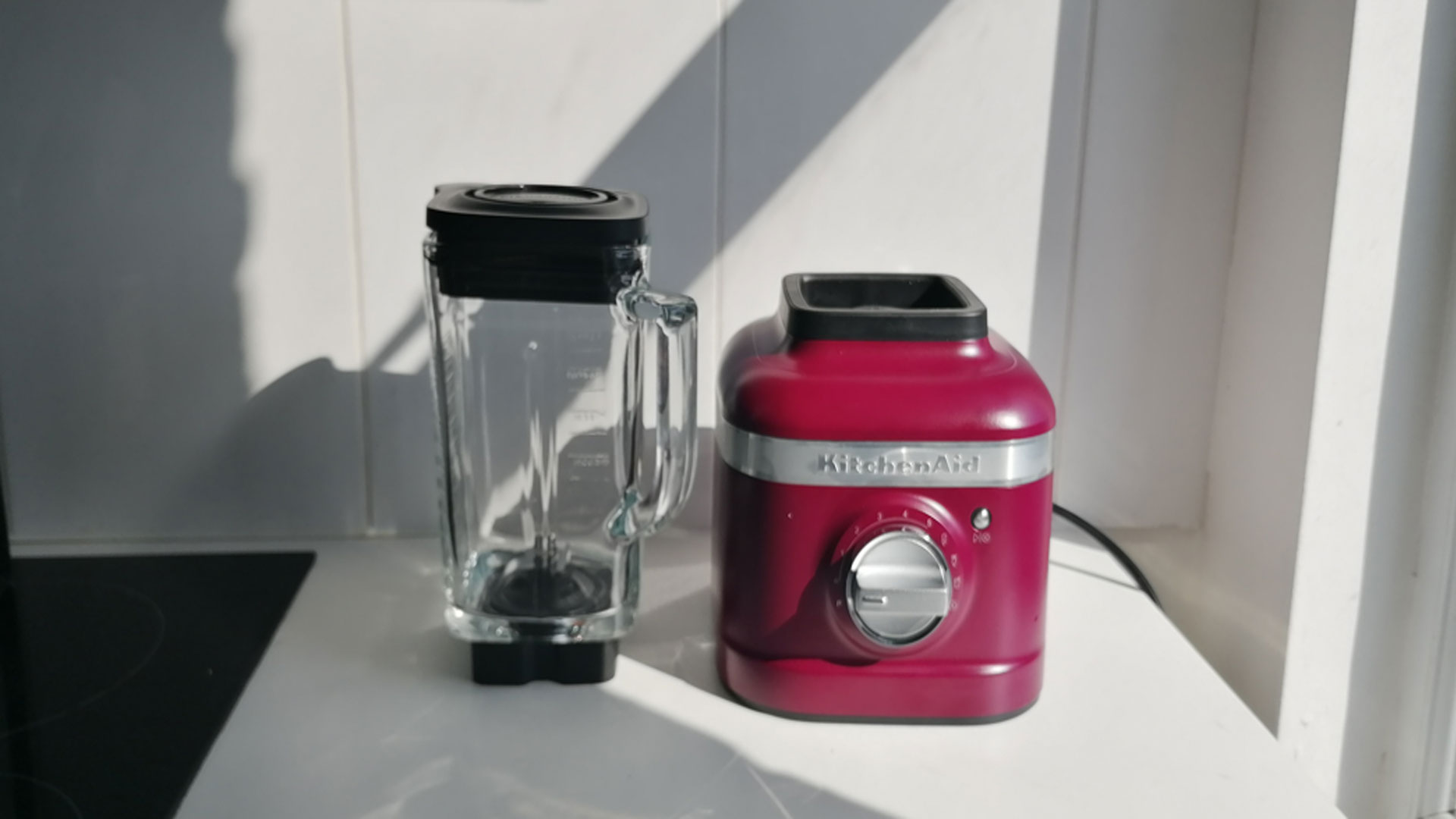The KitchenAid K400 is a stylish appliance that definitely deserves a place in our guide to the best blenders available out there.
The latest model by the well-known kitchen brand, the K400 doesn't only have the classic KitchenAid retro look in a beautiful array of colors, it also packs an impressive performance punch. We've been using it consistently for over three months now, and it really does make life easier.
With several pulse settings as well as preset blending programs for crushed ice, smoothies, iced drinks and a cleaning mode, the KitchenAid K400 is designed to make whipping up your favorite sauces and drinks in a jiffy, hassle- and mess-free.
It's important to note that it's best suited for a kitchen with significant countertop space, though, as it's quite a chunky appliance. It comes with a 1.4L jar (plastic in the US, glass in the UK) which is great for making a decent quantity of whatever it is you're making but isn't great at producing a small amount of sauce unless you purchase smaller attachments, which come at an additional cost.
If you're looking for a beautiful, reliable blender and are prepared to invest to get a high-quality appliance, the K400 might just be the perfect choice for you. Read our full review to find out more about its specs, maintenance, and most importantly, how it performed in our tests.
KitchenAid K400: Design
There's no doubt about it, KitchenAid knows how to create beautiful kitchen appliances - and the K400 is no exception. It's got that signature bold color and simple design that we've come to know and love from KitchenAid.
The blender is available in a variety of bright colors, from classic red, black, and silver to pistachio, lemon, and honey orange. We tested the K400 in KitchenAid's beautiful 2022 color of the year, Beetroot. It popped beautifully in our mostly-white kitchen, and just elevated the whole space.
On the base, there is a large silver dial with the different blending modes you can set the appliance to. You can change between the modes by adjusting to where the dial is pointing, and pressing the little "on" button to the right-hand side of it. The images around the dial illustrating each setting are quite small and could be hard to read for some. Additionally, the "on" button lights up ever so sligthly when the blender is ready to go, but we found it hard to tell when that was the case.
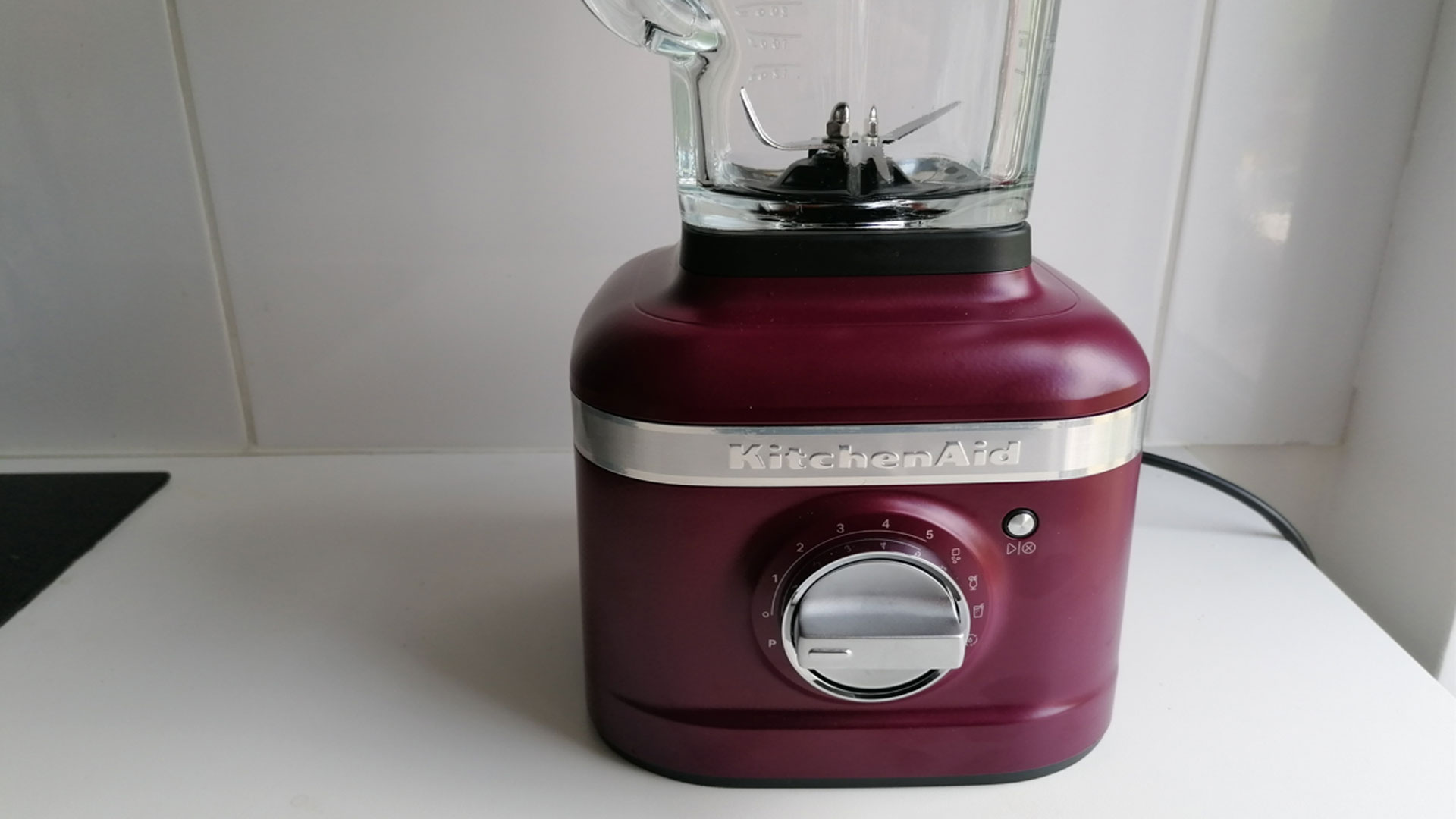
Aside from the colorful block base of the blender, the design is really very simple. A 1.4L plastic jar (glass in the UK) slots neatly onto the base without having to turn and click it into place, and a plastic black plastic lid fits snugly onto the jar to avoid any spillage. You can remove a small part of the plastic lid by twisting it, which opens up a space to top up your preparation with more ingredients as you blend.
The jar has a slight spout on one side for easy pouring of your preparations, which is handy if you want to avoid mess. It is also adorned with measurements on two of its sides: one side in liters, the other in fluid ounces.
Attached to the bottom of the jar is KitchenAid's proprietary asymmetric stainless steel blade, which although helps with the blending, makes cleaning quite difficult. Good luck getting rid of a piece of food lodged below the blades, or some of the thicker food residues you might make in your blender.
The high-quality materials and powerful motor do mean that this is a heavy appliance, clocking in at 14.6 lbs. It's definitely not an appliance to take on the go or one you'll want to have to move on a regular basis, so unless you have a spot for it on your counter, you'll want to avoid this.
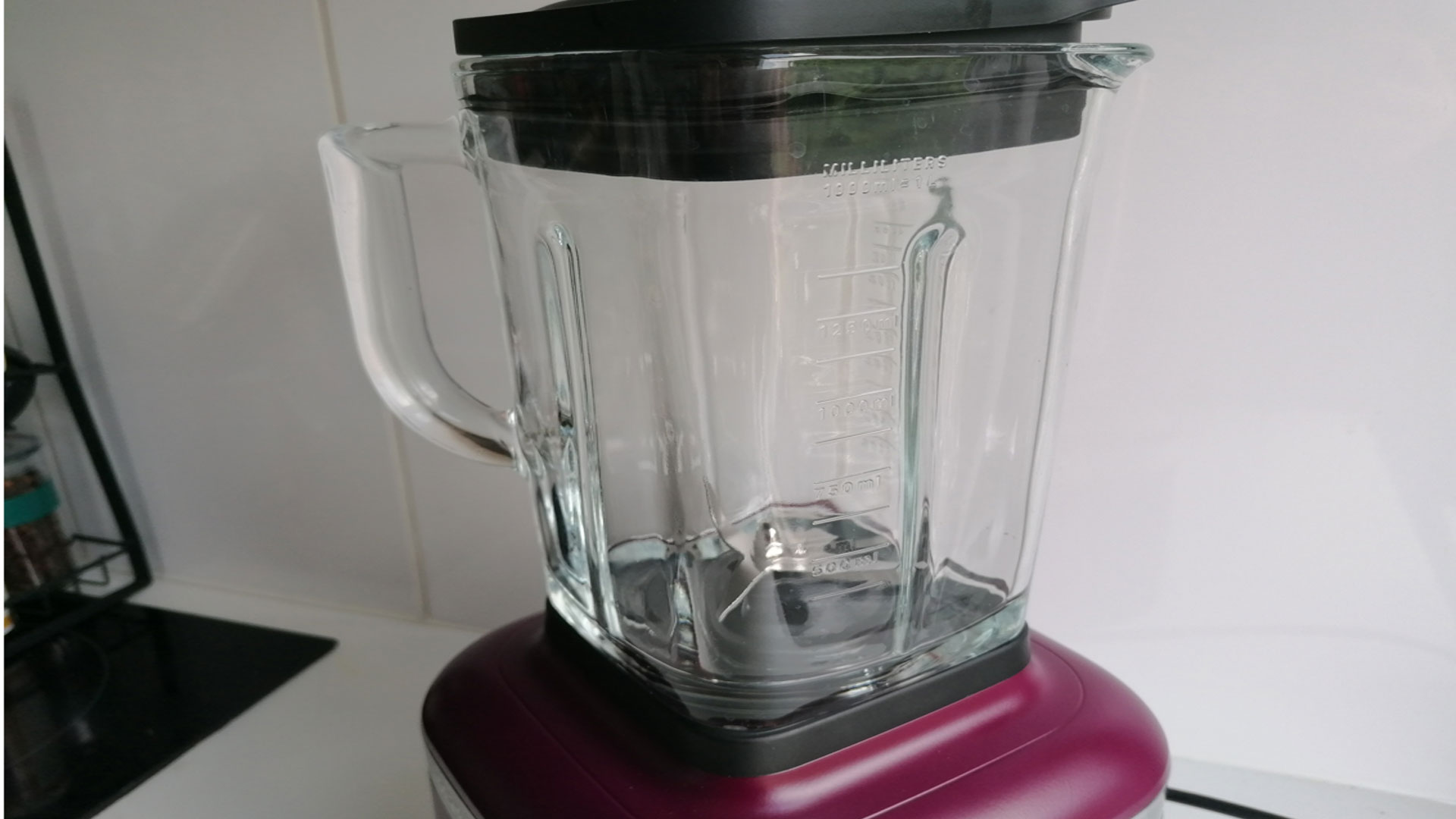
KitchenAid K400: Features
As well as the standard "pulse" button, the KitchenAid K400 has five blending speeds, and three preset blending modes: ice crush, icy drinks, and smoothie, plus a self-cleaning mode. All of the speed settings and the preset modes start very gradually, which is nicer on your ears but also produces a smoother result faster.
The blender comes with the base and a jug, which is made of glass in the UK and plastic in the US and Australia. There are other accessories available that work with the K400 such as a small jug and tamper, but they all come at an extra price. If you're after an all-inclusive package or a blender with more accessories, this blender might not be the best option for you.
We like that the jar's lid is completely airtight, which means there was no spillage at all during our various tests. Additionally, the measurements help if you're making something like pancake batter or dividing out a smoothie between several people.
KitchenAid K400: Setup
The KitchenAid K400 comes in a large cardboard box (recyclable), padded with some cardboard and some polystyrene (not recyclable). It's quite heavy to carry, so depending on your lifting abilities, you might need to enlist some help.
This blender gets full marks for setup: it takes no time at all to get the appliance going. It comes with an instruction manual and a card outlining the main features including the different blending modes, which is really all you need to get started. Apart from its weight, assembly only requires setting the blender body near a plug, slotting the jug on the base, and the lid onto the jug.
The base has a dial with different pulsing speeds and preset blending programs. Once the blender is plugged in, you can turn the dial to the setting of your choice and white light around the small round button on the right-hand side of the dial should start pulsating to show it is ready to go. This can be hard to spot if the room is bright, as the light is very white. When it's ready, simply press the button for the blending to start - this can take a few attempts as the button isn't the most responsive, but overall it should take seconds to start blending once you've got your ingredients in the jar.
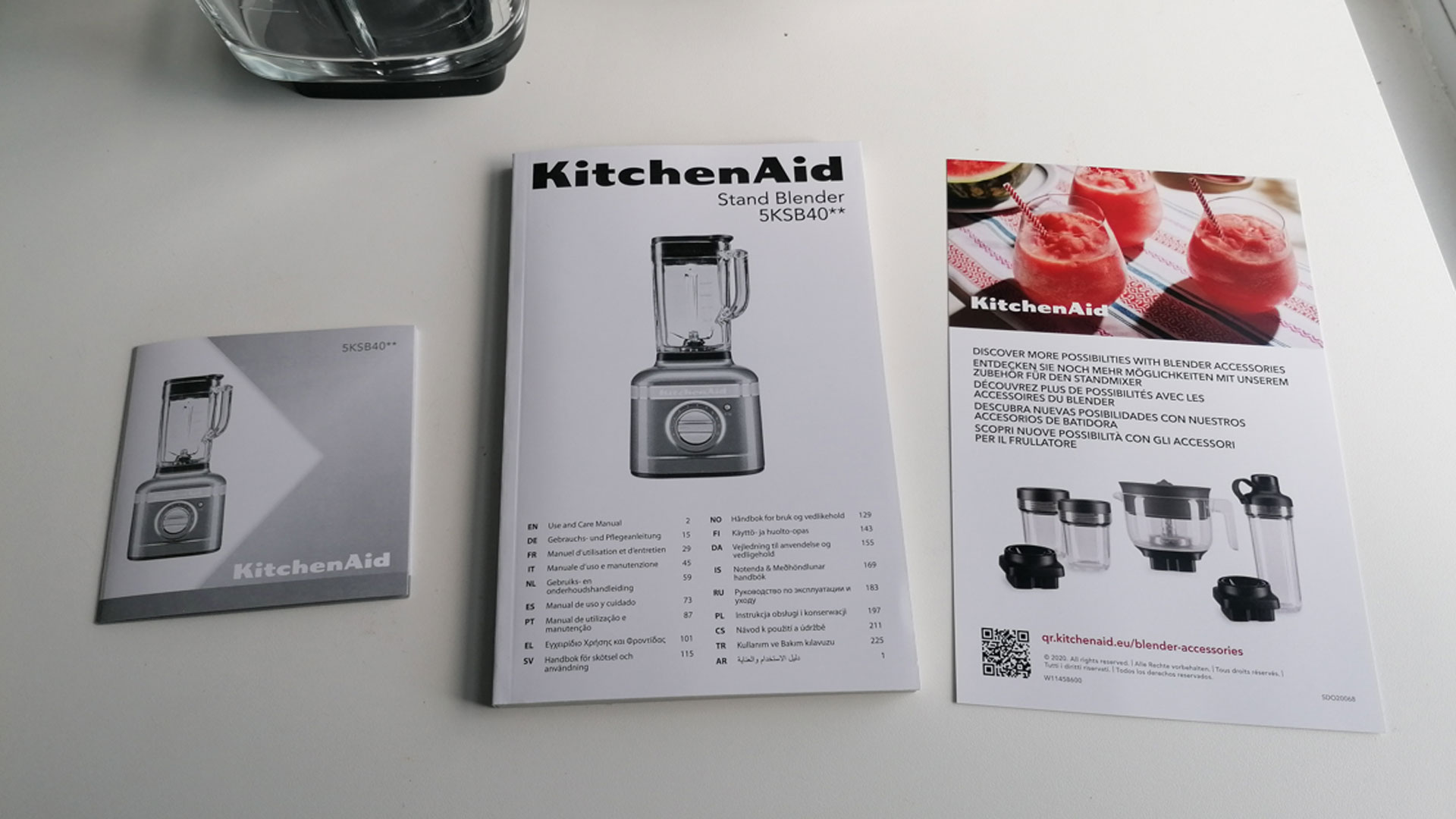
KitchenAid K400: Performance
We've been using the KitchenAid K400 most days for the past three months, making smoothies, soups, sauces, and crushing ice. We even made some peanut butter to see how well it would fare at turning solids into a paste.
This blender is definitely the most efficient we've tested at making smoothies. It delivered a completely smooth mixture from frozen fruits and milk in about 45 seconds using the "smoothie" blending mode. Three months in, it's still as reliable as it was at the start, and we happily use it most mornings.
The other impressive feature is ice crushing, which again takes a matter of seconds. It makes a racket, sure, but you get perfectly crushed ice to make slushies and cocktails with no effort at all. During the recent heatwave episodes, we used it to make cold soups and felt unafraid to put chunks of ice in the mixture for the K400 to blend away.
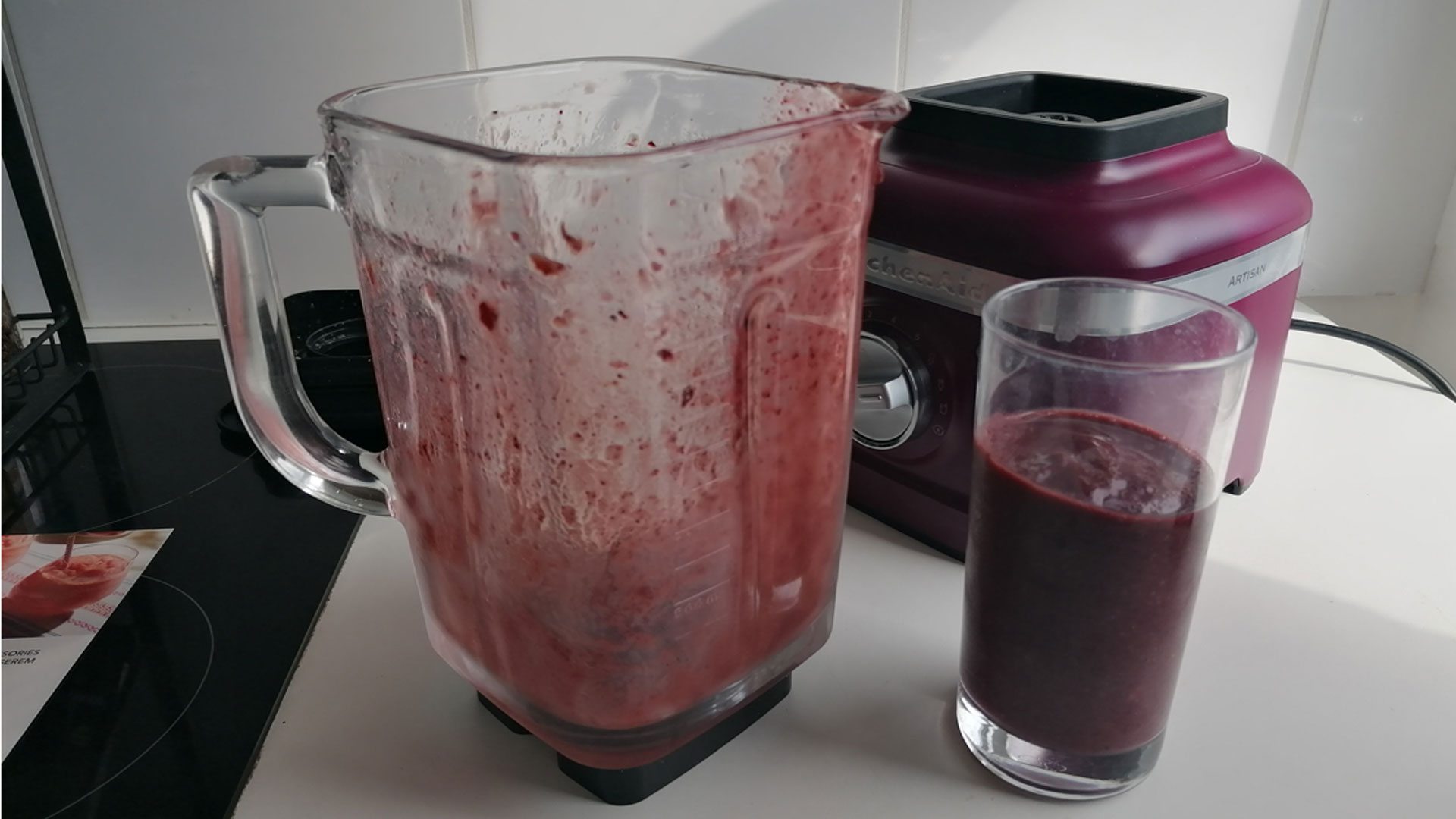
We have to confess the difference between the three preset modes felt quite minimal to us. They all start slow and gradually increase, pulsing in small bursts and then very fast continuously. The crushed ice mode did leave some small chips while the smoothie one delivered a smooth thick juice, however, so the modes do what it says on the tin.
Another thing to note is just how loud the preset modes get - once they're in full swing, it's almost overwhelming how loud and intense the blending is, especially with ice. Our decibel counter clocked in at 85 decibels at the most intense stage of the blending, which is just too loud to stay next to while you are blending. We also spare a thought for our neighbors every time we start making a smoothie at 7.30am, so perhaps this is something to be conscious of if you live in an apartment.
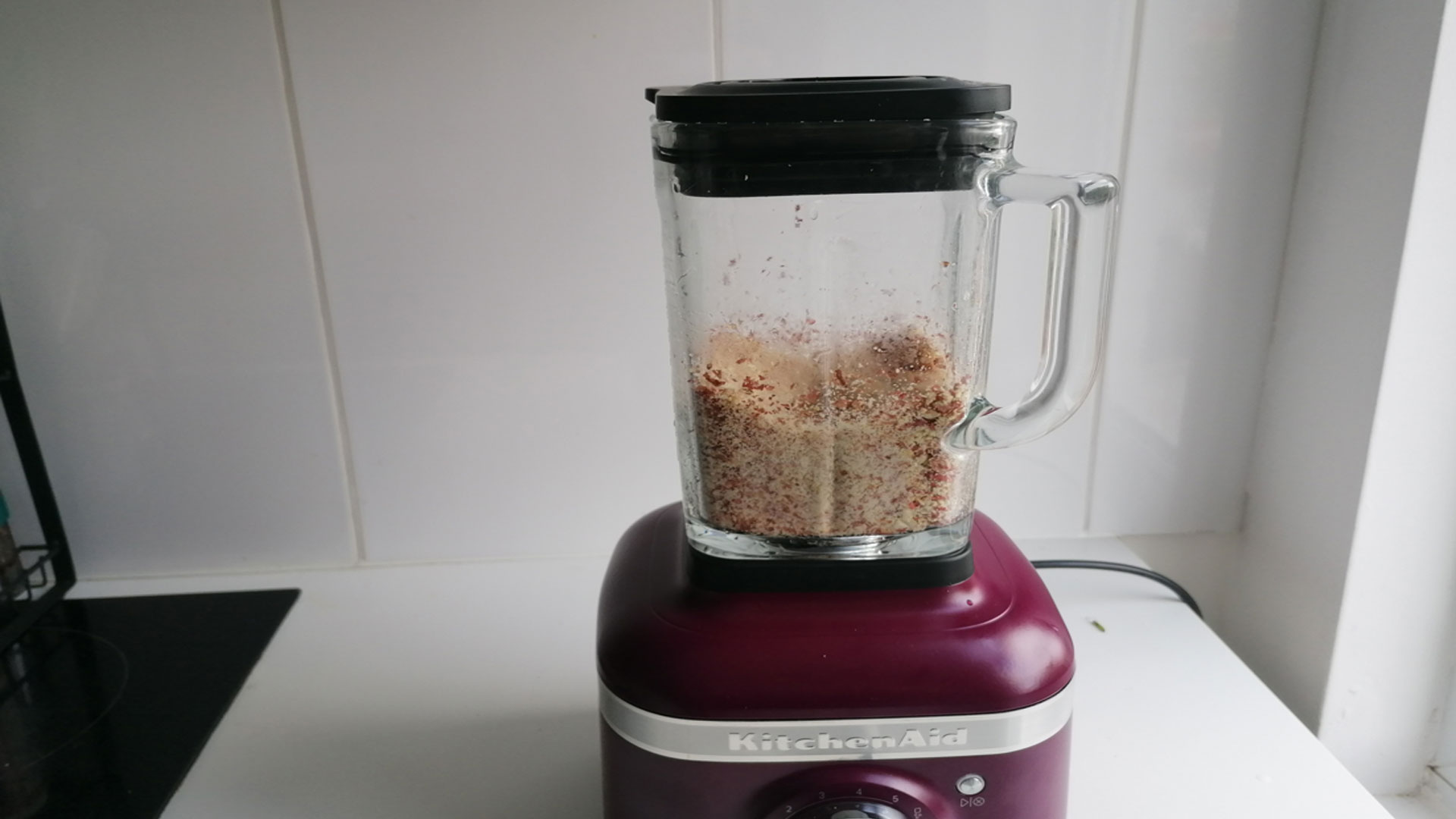
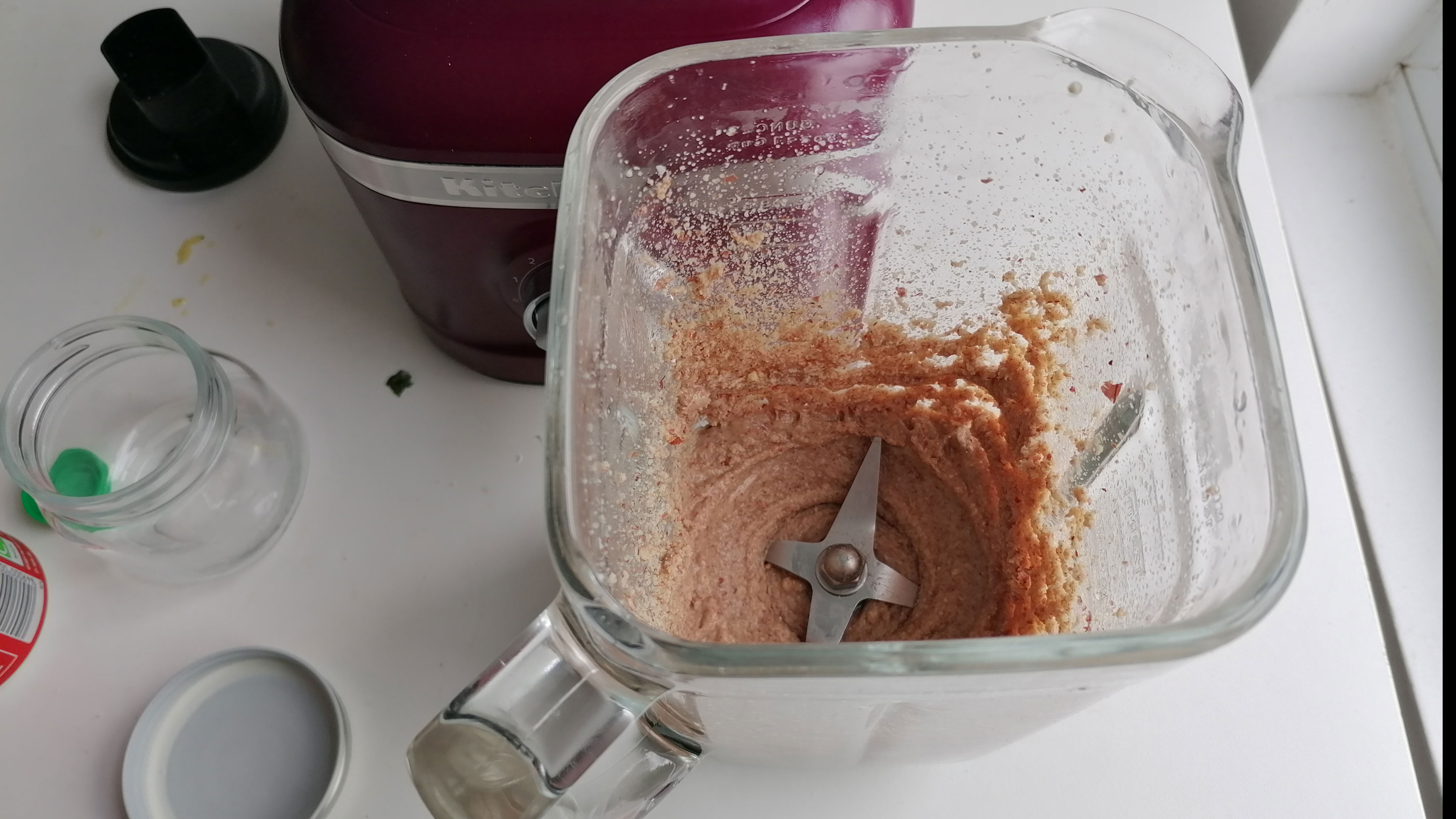
While we established that the K400 is an amazing blender, we felt the performance in other food processing tasks was a bit underwhelming. KitchenAid says you can use this blender to make nut butters, soups and sauces, but we had some issues making pesto, for example. This may have been because we only had the large jar and no tamper accessory, but we found the blade struggled to efficiently break up solids. It kept throwing the food up to the side, which would then not slide back to the blade as there was not enough liquid. In a smaller blending container it might have worked, but we only had the large jar on hand.
Our attempt at making a small amount to pesto yielded a chunkier sauce than we would've liked, even after a few minutes of blending, opening the blender, pushing the contents to the bottom so the blades could reach them, and repeating. The same happened with the nut butter - the blade didn't reach most of the peanuts so we had to keep pushing them down with a chopstick between pulsing. In the end though, we got a mostly smooth paste which we've been finding very tasty on some toast with our morning smoothies.

KitchenAid K400: Care
One cool feature of this blender is the self-cleaning mode, which in theory should be really practical. The manual says to fill the jar halfway with warm water and some dish soap before placing it on the stand and pressing to "on" button with the dial set to the cleaning mode.
Again, we found that for smoothies, it worked a treat: as the mixture is quite liquid-y already, the warm soapy water and the high speed blending get rid of all the residue. However, for chunkier and stickier food stuffs like nut butter, we found that the self-cleaning mode wasn't that effective at all, and we had to thoroughly scrub the jar with dish soap and a cleaning sponge. The blade made it quite tricky to properly clean the bottom of the jar, as it's easy for bits of food to get stuck underneath it.
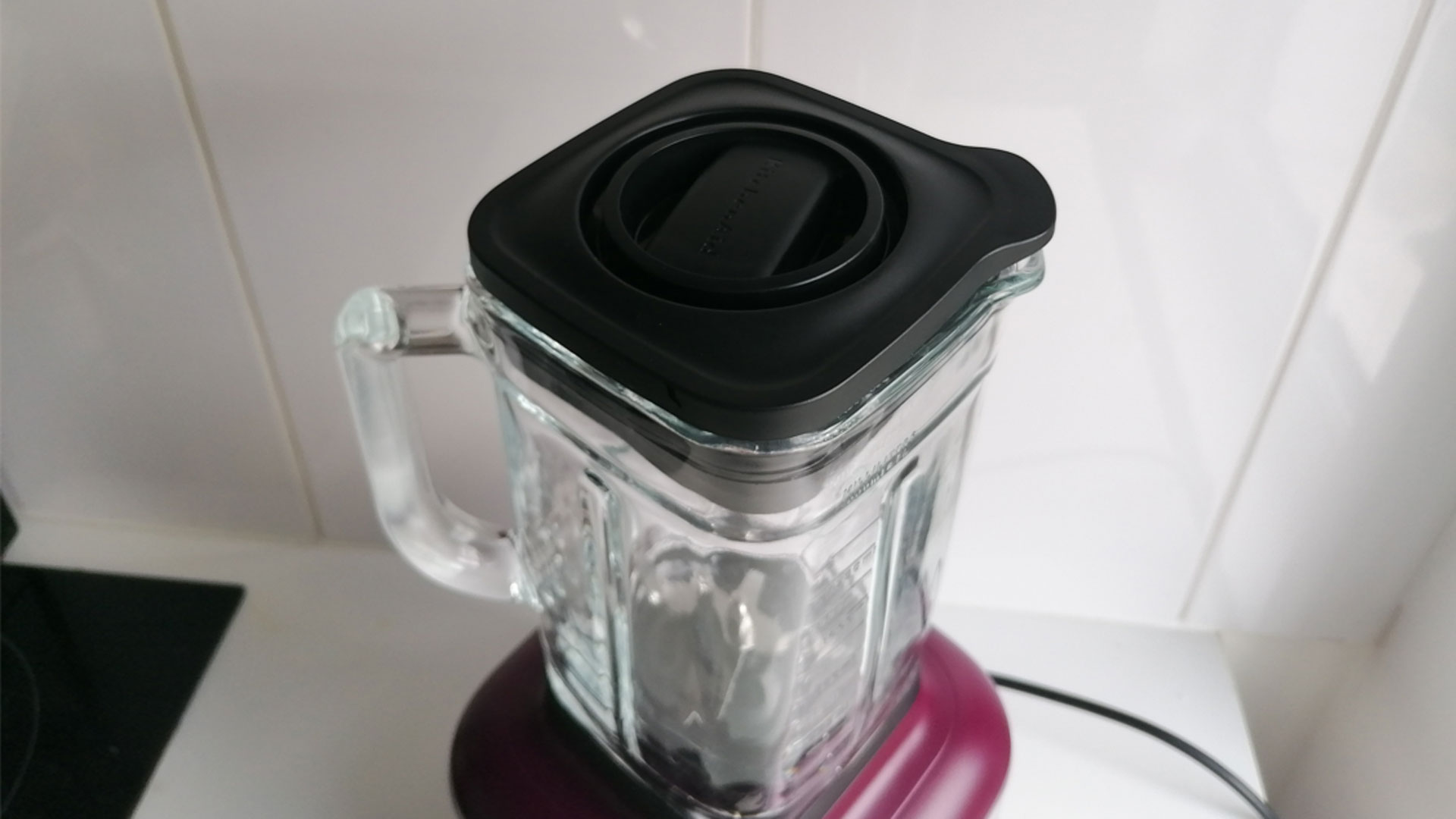
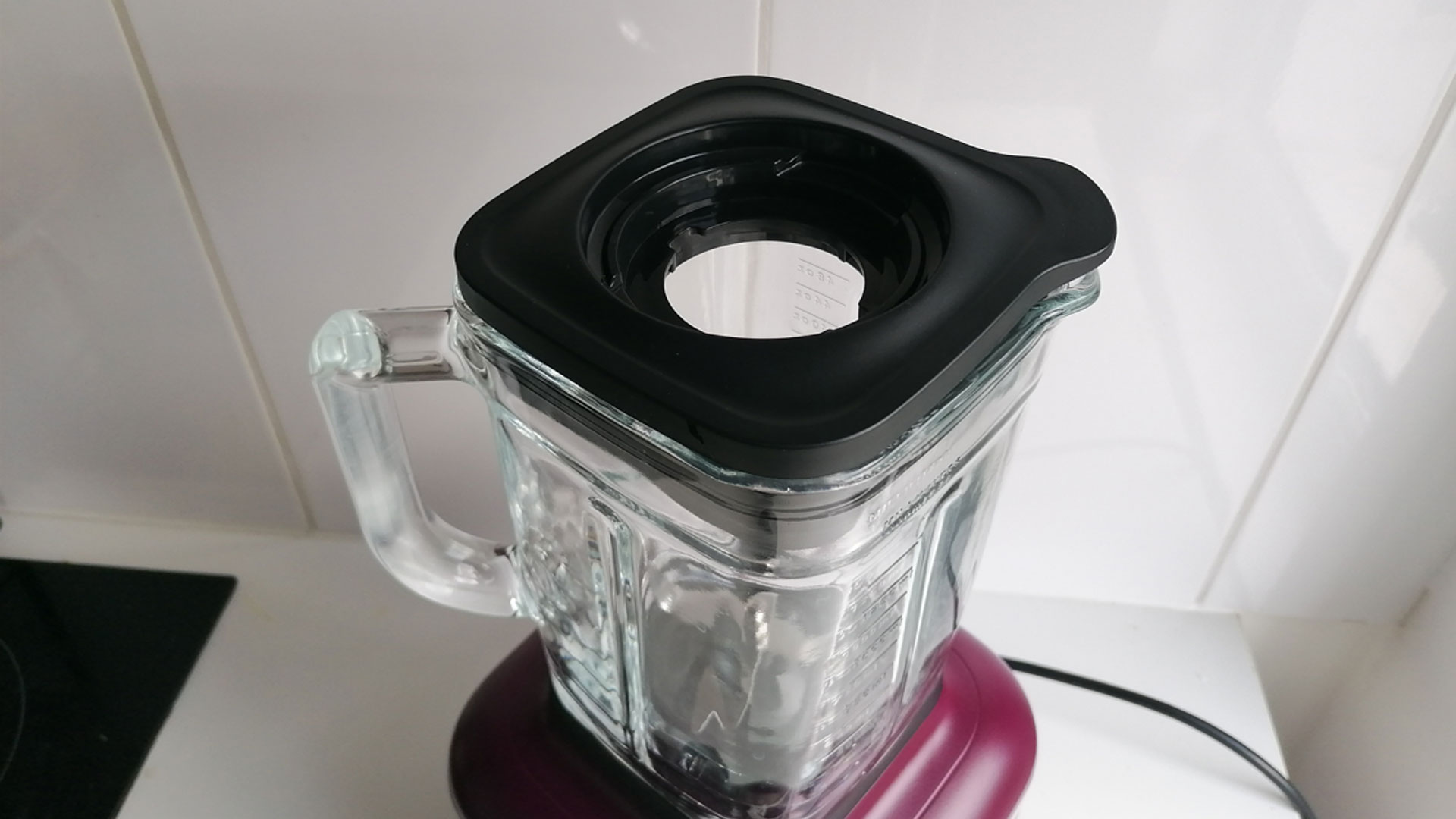
KitchenAid K400: Price
The K400 is on the higher end of the price scale, clocking in at $299.99/£299 for the base and the large jar. Any accessories cost about $50 extra, so if you were hoping to get a smaller blending container and the tamper accessory, you'll have to shell out close to $400.
KitchenAid K400: User reviews
The KitchenAid K400 scores an impressive 4.7 stars out of 5 on Amazon, out of 50 ratings. Users praised how easy the appliance is to use, as well as the power and the ease of cleaning it. However, some reviews criticized how loud it is when it blends, which we did note was true.
Should you buy the KitchenAid K400?
If you're after a large, powerful blender to make smoothies, soups and drinks for your family, then this is a very safe bet. We're fully convinced by our testing so far, and three months in, the performance is still as good as when we unboxed it. It's also a beautiful appliance that comes in a variety of colors, so it'll make a great statement in your kitchen.
However, it's worth noting that this is quite a heavy and chunky product - if you have limited countertop space or just need a smaller blender, this will probably not suit you. Despite its claims and preset functions, it also doesn't quite hit the mark as a food processor, so if you were hoping to use your blender to make sauces and things like nut butters, the KitchenAid K400 might not be the best choice for you.
How does the KitchenAid K400 compare?
If for whatever reason the KitchenAid K400 isn't for you, we've tested other blenders which might be more appropriate for your needs.
If you're on a budget, the Ninja Professional BL610 is a very powerful blender for about a third of the price of the K400. It only has three speed settings and no preset blending modes, but you get decent power and a large capacity for a very small price.
If you're short on space and want a smaller blender, the Nutri Ninja BL480D is much smaller countertop blender that comes with blending cups of different sizes. It's obviously not as powerful as the K400 and probably best for one or two people, but for it's very convenient and easy to clean.
